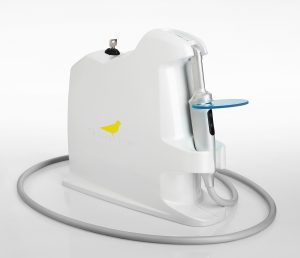
In the past, controlling or treating dental caries meant restoring all areas of decay. After which, the patient was believed to be “caries controlled” until something new developed. We now know that this thinking is flawed. Filling or restoring caries does not treat the disease, only its effects on the tooth. In 2001, the National Institute of Health defined caries as a disease resulting in the destruction of tooth structure by acid forming bacteria found in dental plaque in the presence of sugar. Factors such as diet, oral pH and bacterial load play key roles in assessing current and future caries risk and in developing a course of treatment and a plan for prevention. The 21st century method of caries assessment now includes The Canary System®, an advanced caries detection technology to identify caries sooner than traditional visual, radiographic and tactile exams with an explorer.
Assessment of risk is the first step to achieving caries control and developing a protocol to prevent reoccurrence. OralDNA®’s OraRisk® Caries examines bacterial load and associated risk which are critical components in managing the disease. As clinicians, we should be looking at dietary factors and home care as components in what is driving the disease. Finally we need to detect, measure, monitor and record the changes in tooth structure caused by caries using The Canary System®.
The Canary System® is a precise laser-based system with an integrated intraoral camera that examines defects of the tooth’s crystal structure allowing for caries detection 4x earlier than traditional methods without damaging the tooth’s crystal structure with tactile explorer exams. It quantifies monitors and records changes in the structure of enamel, dentin and cementum lending itself to monitoring the remineralization process. In proximal caries diagnosis, The Canary System® is more accurate than bitewing radiography, according to an independent clinical study conducted at the University of Texas. In this clinical study, The Canary System® had a sensitivity of 92% compared to 67% for bitewing radiography.
Therefore, a comprehensive caries exam should involve OraRisk® Caries to access risk for future lesion advancement and an examination with The Canary System® to locate and measure the lesions. Both these tests provide critical data and valuable reports for both the clinical team and patients. These are ideal tools for engaging patients in their treatment.
For small early lesions, home and office based re-mineralization/preventive therapies are ideal to maintain the integrity of the tooth; The Canary System® will provide the patient and clinician a tool for monitoring over time. A person identified as moderate caries risk with OraRisk® Caries has a greater risk for caries advancement in even the smallest lesions. Detection of lesions as small as 50 microns with The Canary System® allows those areas to be identified sooner than ever before so they can be treated or reversed with more conservative forms of treatment and offers an opportunity for remineralization that can then be quantitatively tracked and monitored with The Canary System®. In the end, prevention is enhanced, saving the tooth’s structure as well as the patients time and money.
In order to fight caries you need to understand its cause and identify it at its earliest sign. OraRisk® Caries and The Canary System® are the perfect duo to develop a proactive caries control program for your practice.
To learn more about The Canary System please visit www.thecanarysystem.com.

For more information on how to become an OralDNA Provider – scan HERE: 
- Periodontal Disease, Sleep, and a Water Bottle – What’s the Connection? - June 17, 2022
- Caries Risk Assessment Duo: The Canary System® and OraRisk® Caries - December 21, 2018
